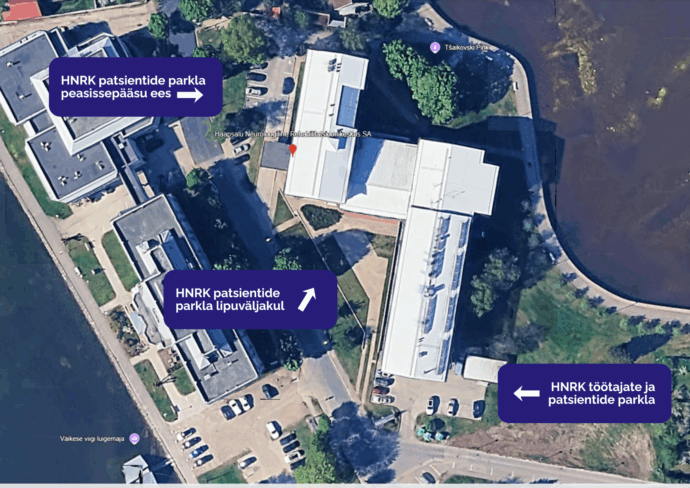Clinical motion and gait analysis laboratory
The clinical motion and gait analysis laboratory (or simply gait lab) of HNRC was opened on 29th October 2009.
The gait lab is developed with the aim of supporting the development of evidence-based rehabilitation and improving the quality of the clinical decisions concerning human walking.
The opportunity to assess the need for and effectiveness of different interventions is of course equally important. The work of the clinical motion and gait analysis laboratory is not research-oriented, but the data collected during clinical activities does provide opportunities for scientific research.
The gait lab of HNRC is equipped with Vicon motion and gait analysis systems: 8 MX T-Series infra-red cameras, 2 video cameras (one to record the patient’s movement from the front, the other from the side). Our equipment also includes 2 AMTI force plates. All these technical solutions are supported by Vicon software: Vicon Nexus, Vicon Polygon, and other programs that have been designed to record, process and report data.
Since the gait lab is a part of HNRC’s clinical environment, the laboratory area is also equipped to facilitate physiotherapy: 2 Guldmann body weight support systems, Panasonic JOBA Core Trainer and a tailor-made treadmill built into the floor. The room’s equipment facilitates the weighing of wheelchair users.
Our gait lab has 2 PTs, PRM specialists and IT specialists. The gait lab is a member of the Nordic Vicon Users Group (NVUG) and co-operates closely with a number of laboratories and specialists from abroad.
A video (in Estonian) introducing the clinical motion and gait analysis laboratory of HNRC in ERR’s (Estonian Public Broadcasting) project “Puutepunkt” (3.10.2010)
What is GAIT analysis?
Gait analysis can be divided into three major parts: preparing the patient, recording the gait data, and analyzing and reporting the recorded data.
Patient preparation:
- anthropometric measurements are taken (measurement of leg length and other areas that are anatomically relevant to gait analysis, such as knee and ankle width, etc.)
- clinical assessment is performed by a PT (evaluation of the patient’s joint range of motion, muscle strength, muscle tone, balance, etc.)
- infrared reflective markers are attached to the patient’s body
Data recording
- the patient is asked to walk in their usual manner
- their gait is recorded using specialist software
- the patient is photographed
The patient preparation and data recording takes ca 1.5 – 2.5 hours.
The analysis of the recorded data is a thorough and time-consuming process.
The final results of the analysis will be sent to the patient or the institution/specialist who ordered the respective gait analysis in the prearranged form within the agreed time frame. The data analysis shall take account of the clinical measurements, observational findings, recorded data, etc.
The main advantage of 3D gait analysis is its ability to enable the visualization of the subject’s movements with such a high degree of precision that is impossible to achieve using observational gait analysis, which makes the 3D gait analysis results ideal for facilitating the making of clinical decisions.
The parameters that can be more accurately visualized and assessed are:
- Temporal and spatial parameters – velocity, step length and width, etc.
- Kinematic parameters – joint range of motion characteristics throughout the gait cycle
- Kinetic parameters – information related to joint moments and power
- EMG data – information on muscle activity
The key role in conducting gait analysis and recording-processing-interpreting their results is played by the people who participate in this process.
Accurate measurements and marker placement are the two cornerstones of a successful analysis. Therefore, the learning and training process of our staff and finding ways to facilitate the development of competent personnel are vital for the gait lab of HNRC.
Before conducting gait analysis, it is important to know what the analysis is aiming to discover.
Gait analysis cannot be performed on people who:
- are unable to walk
- are overweight, because the movement of thick subcutaneous tissue gives rise to unavoidable measurement errors in joint range of motion
- use the following assistive devices for mobility: rolling walker, walker, etc.
- get tired very easily (in less than 30 min) and have to lay down to rest
- are mentally unstable
- are mentally challenged and therefore not able to understand what is happening to them
In the global practice, the majority of gait analyses are performed on children, especially on children with cerebral palsy, to help decide between different orthopaedic surgical interventions, determine the need for various orthoses, etc. The application of gait analysis in the treatment of adults is also on the rise: it is used, for example, to tackle the gait abnormalities of people with incomplete spinal cord injuries, stroke, knee and hip prostheses. The most frequent users of gait analyses results are orthopaedic surgeons, who employ them to make informed decisions in co-operation with PRM specialists, orthotic specialists, PTs, biomedical engineers, and other specialists.
How to apply for GAIT analysis?
To apply for gait analysis, you’ll need to contact the HNRC’s gait lab: send us a description of the patient, their main health and gait problems. You also need to formulate a question for the gait analysis.
Gait analysis is currently not a publicly funded service, so the subject has to be ready for cost-sharing or find sponsor(s).
CONTACT US:
To register for gait analysis, please contact our reception
+372 4725 404
registratuur@hnrk.ee

